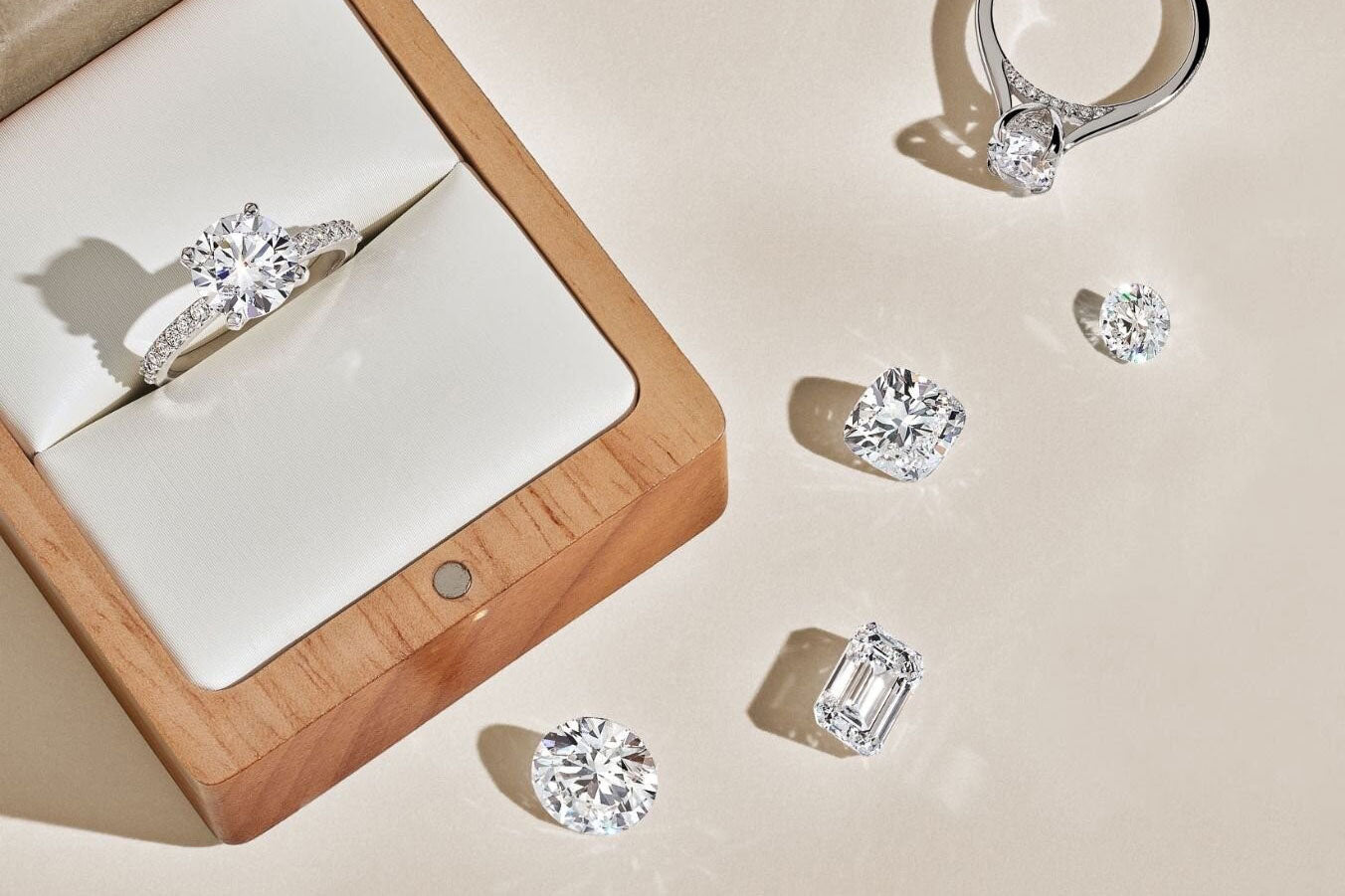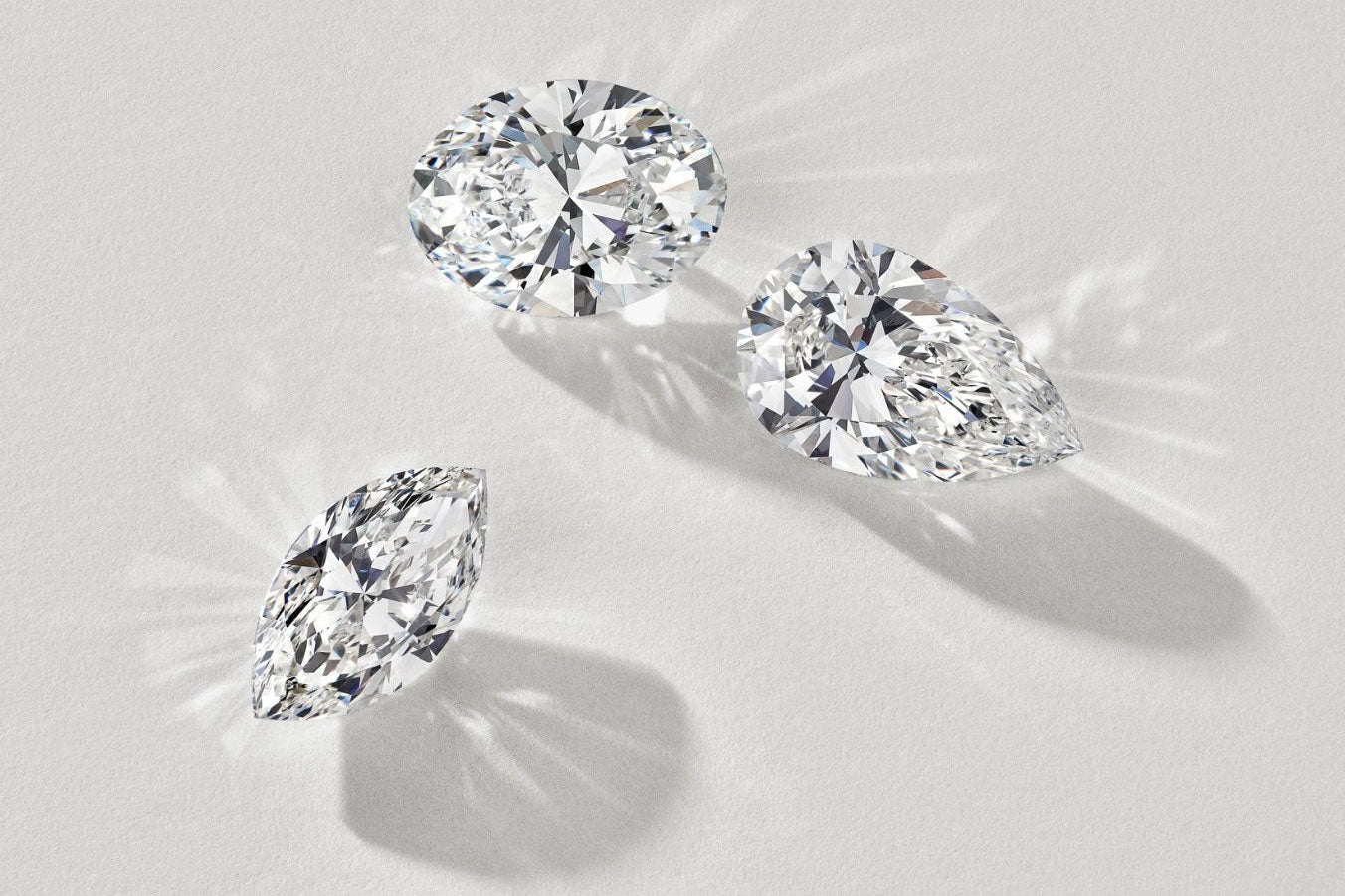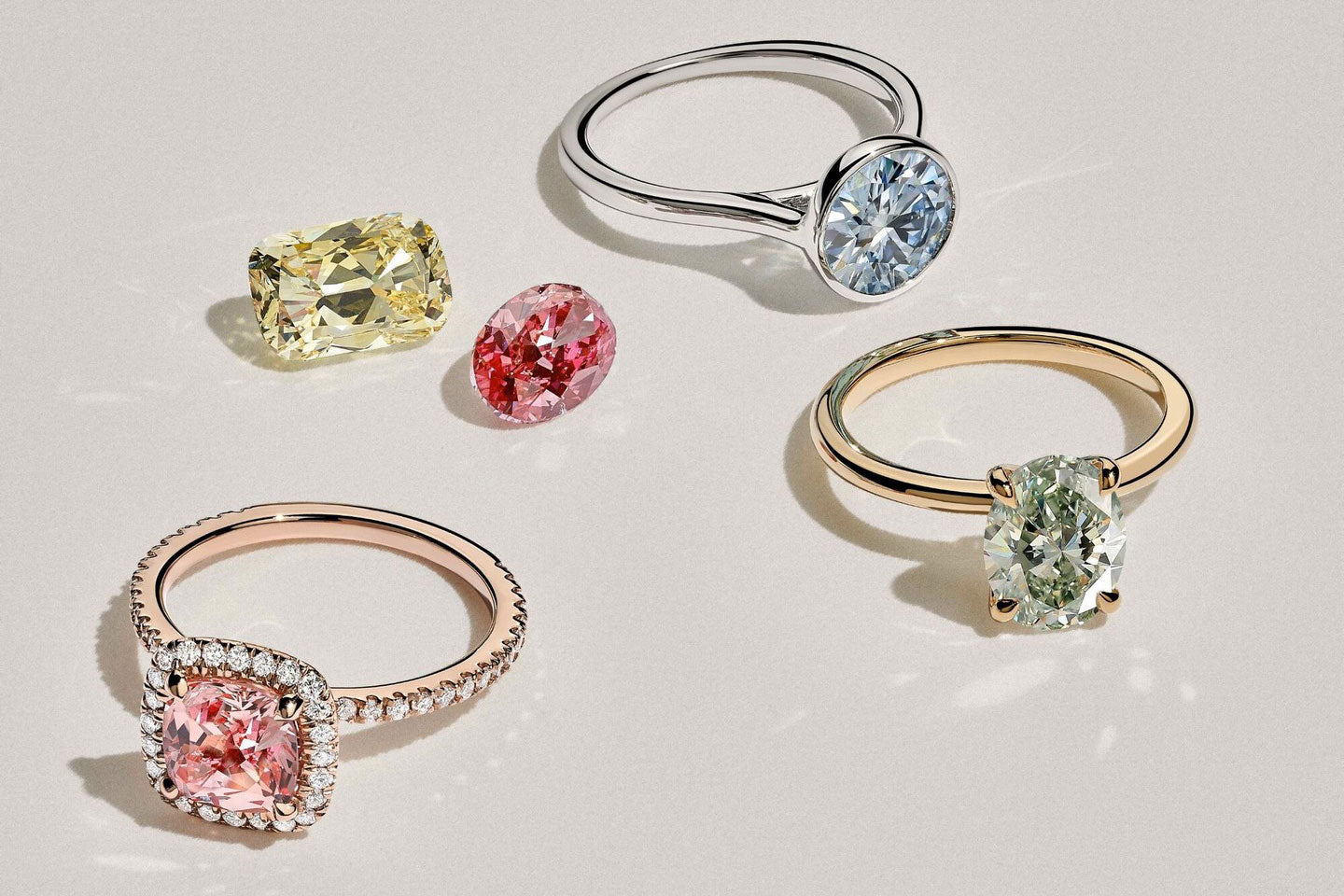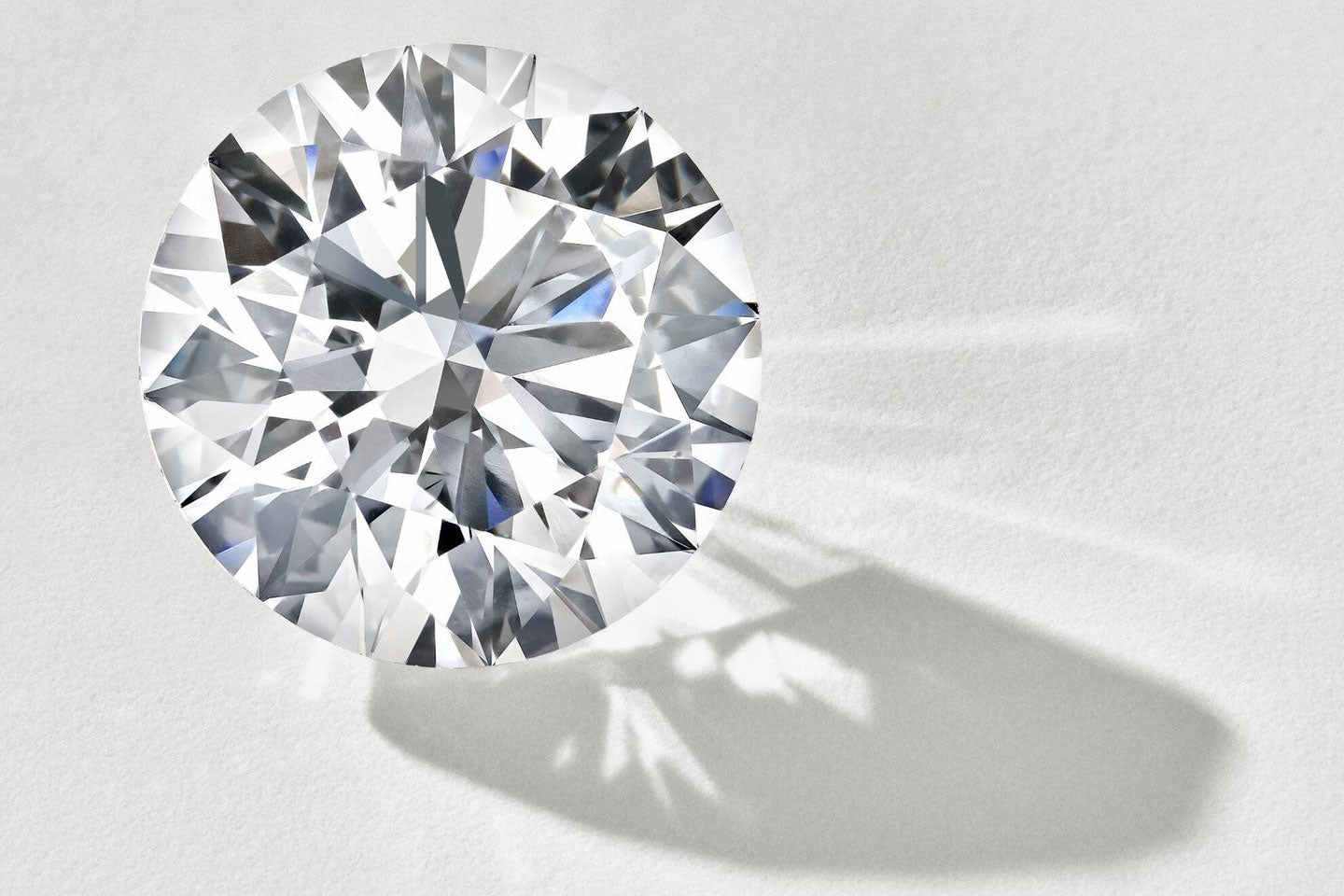Up To $2,500 OFF at checkout - Ends Dec 12
Free 30-day Returns | Lifetime Warranty
Different Carats of Diamonds: What’s Right for You?

This article will delve into the different carats of diamonds and how diamond carat interacts with other attributes in 4Cs to help you decide which carat weight is right for you.
1. Introduction
A common mistake when buying diamonds is confusing carat weight with size. Carat refers to weight, not size. Understanding carat weight is essential for choosing the right diamond. This article will delve into the different carats of diamonds and how diamond carats interact with other attributes in 4Cs to help you decide which carat weight is right for you.
2. Understanding carat weight
2.1. What is carat weight?
Carat measures a diamond’s weight, not its size. One carat equals 0.2 grams, about the weight of a paperclip.
Diamond Carat Chart
The size of a diamond is proportional to its carat weight. When rough diamonds are cut and polished into finished diamonds, up to 2/3 of the total carat weight may be lost. Since larger rough gems of high quality are found less frequently than smaller rough gems of high quality.

While it is easy to assume that a higher carat number means a larger diamond, the actual physical size of a diamond also depends on its cut and shape. In other words, two diamonds of the same carat weight can look drastically different in size, depending on how they are cut.
For instance, a round-cut diamond will generally look bigger than a princess-cut diamond of the same carat weight due to the way the facets are arranged.

2-carat Coco princess-cut and 2-carat Coco round-cut moissanite ring
2.2. Carat vs. size
Many people confuse carat weight with the size of the diamond. While carat weight gives an idea of how heavy the diamond is, size is actually determined by the diamond's shape and cut.
Therefore, a “1-carat diamond” could appear quite different depending on whether it is cut in a round, oval or emerald shape. A diamond’s cut also influences how well it reflects light, further affecting its visual appeal.
2.3. How carat affects value
Diamonds are typically priced per carat, but the price doesn’t increase linearly as carat size increases. This is because larger diamonds are rarer, and the price per carat increases dramatically as the carat weight grows.
For example, a 2-carat diamond would be valued higher than two 1.0-carat diamonds of the same quality. Therefore, understanding the relationship between carat weight and price can help you determine the best diamond for your budget.
3. The most common carat sizes
3.1. Small carat diamonds (0.25 – 0.5 carats)
Small carat diamonds are an excellent option for those on a budget or for those who prefer a more understated look. Diamonds under 0.5 carats are often more affordable and can still look stunning, especially when set in delicate jewelry pieces.
These diamonds are frequently used for accent stones in engagement rings, earrings and necklaces. Small diamonds are also ideal for individuals who don’t want a large, attention-grabbing stone but still want the elegance and beauty of a diamond.
3. The most common carat sizes
3.1. Small carat diamonds (0.25 – 0.5 carats)
Small carat diamonds are an excellent option for those on a budget or for those who prefer a more understated look. Diamonds under 0.5 carats are often more affordable and can still look stunning, especially when set in delicate jewelry pieces.
These diamonds are frequently used for accent stones in engagement rings, earrings and necklaces. Small diamonds are also ideal for individuals who don’t want a large, attention-grabbing stone but still want the elegance and beauty of a diamond.
3.2. 1-carat diamond
The 1-carat diamond is one of the most popular choices for engagement rings and other jewelry. A carat diamond strikes a perfect balance between size and price, offering an eye-catching presence without being excessively expensive.
A 1-carat diamond is large enough to make a statement but is not as rare or costly as larger diamonds. This weight is commonly seen as the ideal choice for engagement rings, providing the sparkle and prestige that many people look for, while still remaining relatively affordable compared to diamonds with higher diamond carats.
3.2. 1-carat diamond
The 1-carat diamond is one of the most popular choices for engagement rings and other jewelry. A carat diamond strikes a perfect balance between size and price, offering an eye-catching presence without being excessively expensive.
A 1-carat diamond is large enough to make a statement but is not as rare or costly as larger diamonds. This weight is commonly seen as the ideal choice for engagement rings, providing the sparkle and prestige that many people look for, while still remaining relatively affordable compared to diamonds with higher diamond carats.
3.3. 2-carat and above
Larger diamonds, such as those that weigh 2 carats or more, are considered to be premium stones. These diamonds are rarer, and their price per carat increases significantly. A 2-carat diamond makes a bold statement, and its larger size is perfect for individuals who prefer a more noticeable and luxurious stone.
These diamonds are often used in high-end engagement rings or as statement pieces in necklaces and earrings. If you opt for a larger diamond, it is important to balance the carat diamond with cut, color and clarity to ensure that the diamond is as beautiful as it is large.
3.3. 2-carat and above
Larger diamonds, such as those that weigh 2 carats or more, are considered to be premium stones. These diamonds are rarer, and their price per carat increases significantly. A 2-carat diamond makes a bold statement, and its larger size is perfect for individuals who prefer a more noticeable and luxurious stone.
These diamonds are often used in high-end engagement rings or as statement pieces in necklaces and earrings. If you opt for a larger diamond, it is important to balance the carat diamond with cut, color and clarity to ensure that the diamond is as beautiful as it is large.
4. How to choose the right carat for you
4.1. Factors to consider
The ideal carat diamond for you will ultimately depend on your personal taste, budget, and how you plan to wear it.
Here are some key factors to keep in mind when selecting different carats of diamonds:
- Budget: Set a budget and focus on essential factors like cut and clarity before deciding on carat weight. A well-cut diamond can enhance brilliance, even at a lower carat.
- Finger size: Take your finger size and hand proportions into account when choosing a diamond that will complement your engagement ring or jewelry piece.
- Setting and style: Select a diamond size that harmonizes with the setting and design of your jewelry. A delicate setting may look best with a smaller stone, while a bolder design can support a larger diamond.
- Personal preference: Ultimately, go with a diamond size that resonates with you. Whether you prefer a subtle shimmer or a striking statement piece, choose a diamond that reflects your style and personality.
4.2. Practical tips
For those on a budget, one tip is to focus on the cut of the diamond rather than carat diamond. A well-cut diamond with a smaller carat weight can still appear larger and more brilliant, while a larger diamond with a poor cut might look dull.
If you’re looking for a larger appearance without paying for a high carat, consider a halo setting or a diamond shape that maximizes the surface area, such as the oval or emerald cut.
This approach can create the illusion of a larger diamond at a more affordable price point.
5. Trade-offs when choosing a carat size
5.1. Carat vs. cut
When selecting a diamond, there is always a trade-off between carat weight and cut quality.
A higher carat weight may cause the diamond to lose some of its brilliance if it’s not cut properly. A well-cut diamond, even with a lower carat weight, will have more sparkle and visual appeal than a larger diamond with a poor cut.
It’s important to find the balance between size and the diamond's ability to reflect light.
5.2. Carat vs. clarity
Larger diamonds often come with noticeable inclusions or imperfections, especially if they are near the 2-carat or larger range. As carat size increases, the visibility of inclusions becomes more pronounced, so opting for a smaller diamond with higher clarity might be a smarter choice. Diamonds with fewer inclusions tend to be more valuable and visually stunning, even if they have a smaller carat weight.
5.3. Carat vs. color
Diamond carat weight also impacts the color of the diamond. Larger diamonds are more likely to show subtle color differences, so it is essential to balance the carat with a higher color grade to ensure the stone remains white and brilliant.
For example, a 2-carat diamond with a lower color grade might appear yellowish compared to a 1-carat diamond with a higher color grade.
6. Conclusion
Choosing the right carat weight for your diamond is a personal decision that depends on your preferences, budget, and the purpose of the piece.
While a higher diamond carat may seem appealing, it is essential to consider other factors such as cut, color, and clarity to ensure that your diamond not only looks beautiful but also offers the best value for your investment.
Whether you are choosing a small accent stone or a bold, luxurious diamond, understanding the relationship between different carats of diamonds will help you make a more informed, confident decision.
Always remember that the perfect diamond for you meets your style, budget, and desires - regardless of the carat weight.
4 CS OF DIAMONDS

4 Cs of diamond quality
No two diamonds are identical. Each has distinct characteristics. To make an informed choice, focus on the 4 Cs: cut, color, clarity, and carat weight. These factors define a diamond’s brilliance, rarity, and value.

Diamond Cut
Diamond cut refers to the precision and quality of a diamond’s facets - the tiny, flat surfaces on its surface - and how they are shaped, proportioned, and polished. It is one of four key factors, known as the 4Cs.

Diamond Color
Diamonds have long been a symbol of love, luxury, and status, and understanding the factors that influence their beauty and value is essential for anyone considering a diamond purchase.

Diamond Clarity
Explore diamond clarity grade and how it will influence the overall appearance of your diamond engagement ring.




